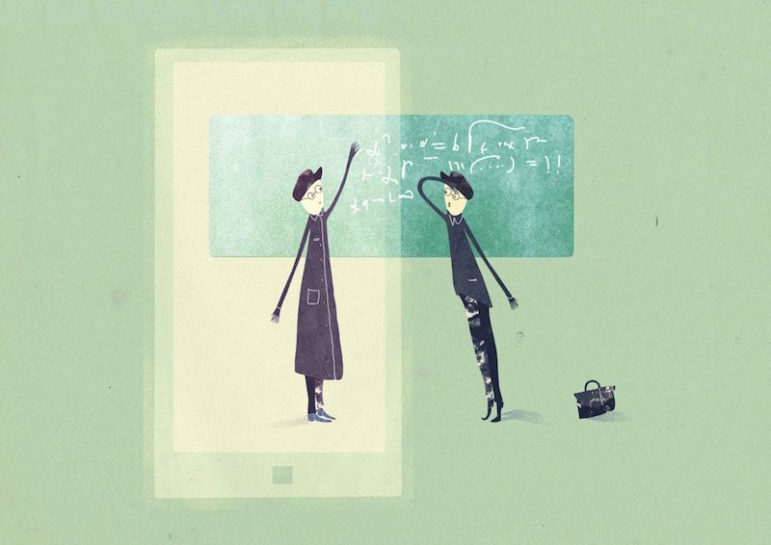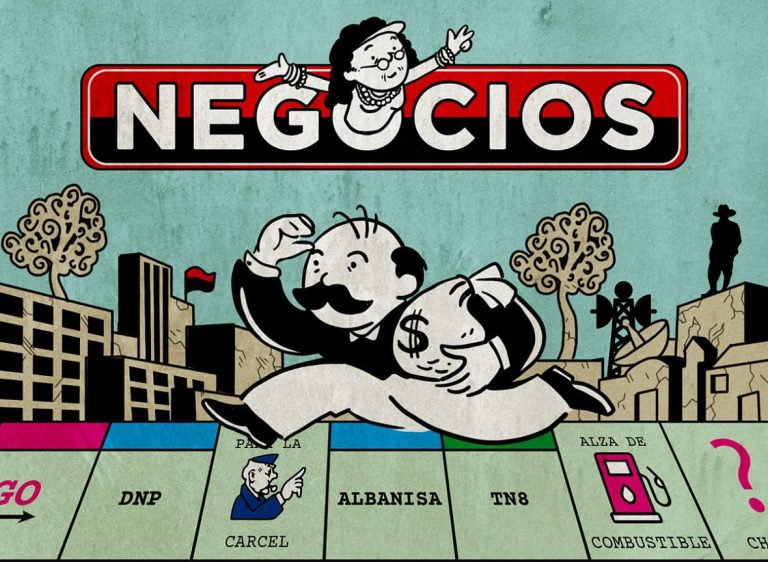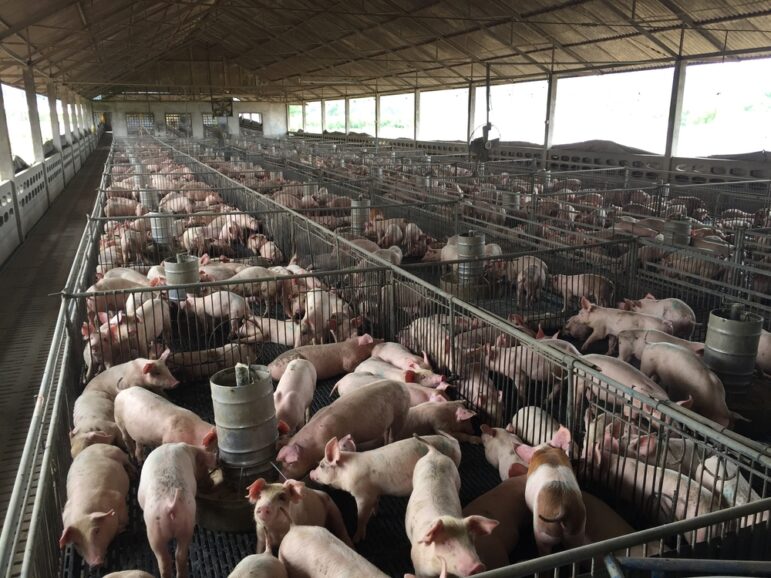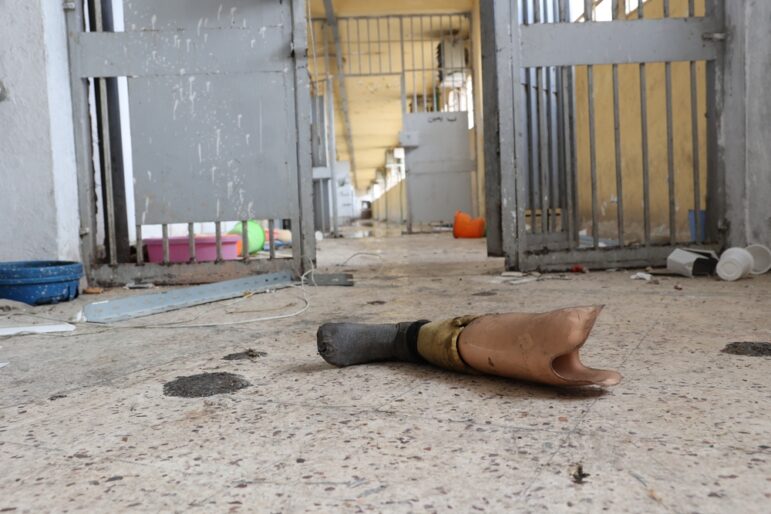

Illustration: Toma Silinaite (Creative Commons license)
Meet the Editor Who Ensures The Bureau of Investigative Journalism Makes an Impact
Read this article in
It’s what readers want, it’s what funders want, it’s what editors want, it’s even what reporters want: The elusive yet ever-important impact that hopefully comes after reporting a story.
Maybe it’s page views, engaged time, a policy change, anonymous donors supporting a profiled family in need, readers converted to paying readers. There’s no standard way to measure impact in the news industry these days (yet), just as there’s no specific way to make a buck besides diversifying your revenue. Impact can be measured in a thousand different ways depending on the news organization and the issue in mind — and the person’s role.
Now, ensuring impact is one journalist’s new job description. At The Bureau of Investigative Journalism, a nine-year-old nonprofit newsroom in the UK, Miriam Wells has taken up the mantle of the outlet’s first impact editor this summer. She joined the Bureau three years ago and has served as its production editor, working with reporters on pitching, sourcing, editing, and even promoting the stories on social media. “I became a journalist because, even though it’s cliché, I wanted to make a difference,” she said. She joined the Bureau because “I had become a bit frustrated with traditional journalism — no matter what you write, no matter how much of a splash it makes, it doesn’t always make a change.”
Her main responsibility as impact editor is now making sure that lack of change doesn’t happen with the Bureau’s journalism. By extension, that will potentially improve the impact for more outlets’ reporting, too: The Bureau frequently collaborates with and cross-publishes content from other news organizations in a triple-partner model. (The ideal trio consists of an international mainstream outlet, a national outlet in the place of relevance to the story, and a specialist outlet like a trade magazine or academic journal, Wells said.)
The Bureau’s investigations into US airstrikes have been published with The New York Times, its domestic violence deep-dive was with the BBC’s Victoria Derbyshire and The Times in London, and its look at the global beef trade’s impact on the Amazon was in The Guardian. But the work goes beyond that: The findings have also been published in the British Medical Journal and the Veterinary Record journal, for example, and filed as evidence in government hearings to get the word out to people who are already in the position to make change. (The New York Times healthcare investigative reporter Sarah Kliff was also recently published in a medical journal.)
“We know journalism cannot bring about change on its own — but it can be a really effective piece of a bigger movement of actors and events that do bring about change,” Wells wrote in her first email to me.
The Bureau’s 2017 impact report highlighted its impact as stories that “increased awareness of hidden wrongdoing, sparked parliamentary debates, questions, calls for action, and even a change in the law.” But in her new job, Wells wants to broaden that definition.
“Impact, for us, isn’t just a high-level thing about a story and policy change. This is about how journalism interacts with the community,” she said. “In strengthening the networks and groups that are working on the issue you’re reporting on, the journalism can serve society and the communities it’s reporting on. That’s powerful and positive, just as much as the traditional gold standard of changing policy or law.”
The documentary field has employed impact producers for years (highlighted in a 2018 Nieman Lab prediction). Roughly, that job title includes project management, fundraising, and publicity. The managing editor of Civio, a Spanish data journalism outlet, has pushed for impact herself by bringing proposed amendments related to its investigations and press freedom to legislators’ offices. So it’s not wildly new, but the concept is still evolving into a dedicated role. This is the closest bit to an impact editor job description in Wells’ post announcing her new role to the Bureau’s readers:
“I will focus on what our journalism does out in the world: how our stories and reporters interact with others to spark change before, during, and after the reporting process, and how those interactions can be more productive. I will build relationships with collaborators and stakeholders, and where necessary act as a bridge between our journalism and the world of advocacy. Ultimately I will consider how we might re-imagine the relationships we have with our communities and the way we tell stories, in order to serve the greatest public interest and survive in a world where old journalism models are dying.”
Is this a glorified engagement editor? Too much of an activist role? Too nebulous, no matter what you call it? Again, it’s impact — and it depends on your definition.
This role emerged from the production editor position after a study from a Bureau board member analyzing journalism’s impact, from Watergate to the Bureau’s work on drone warfare. A specific role focused on impact — especially building the relationships to bridge reporters and the organizations driving social change — was highly recommended. And it helped that the Bureau received a $900,000 grant from Pierre Omidyar’s Luminate to help fund the role and build out a strategy.
Wells is officially off the production editor clock, but the thinking behind what an impact editor does day to day is still in progress. She’s worked with Lindsay Green-Barber, who developed the Center for Investigative Reporting’s impact tracker (which will continue to be used by the Bureau), in fleshing out the role. And she’s in conversation with the Bureau’s readers, like sharing a case study about how to build impact through the reporting and community organizing of the Bureau’s local initiative.
“At this stage, I can see the potential that every investigation could have a community organizer,” Wells said.
This article first appeared on Nieman Lab and is reproduced here with permission. The Bureau of Investigative Journalism is a GIJN member organization.
 Christine Schmidt is a staff writer at Nieman Lab after having been its 2017 Google News Lab Fellow. She’s worked previously at The Dallas Morning News, NBC4 in Los Angeles, the Hartford Courant, and a short stint at Snapchat.
Christine Schmidt is a staff writer at Nieman Lab after having been its 2017 Google News Lab Fellow. She’s worked previously at The Dallas Morning News, NBC4 in Los Angeles, the Hartford Courant, and a short stint at Snapchat.









